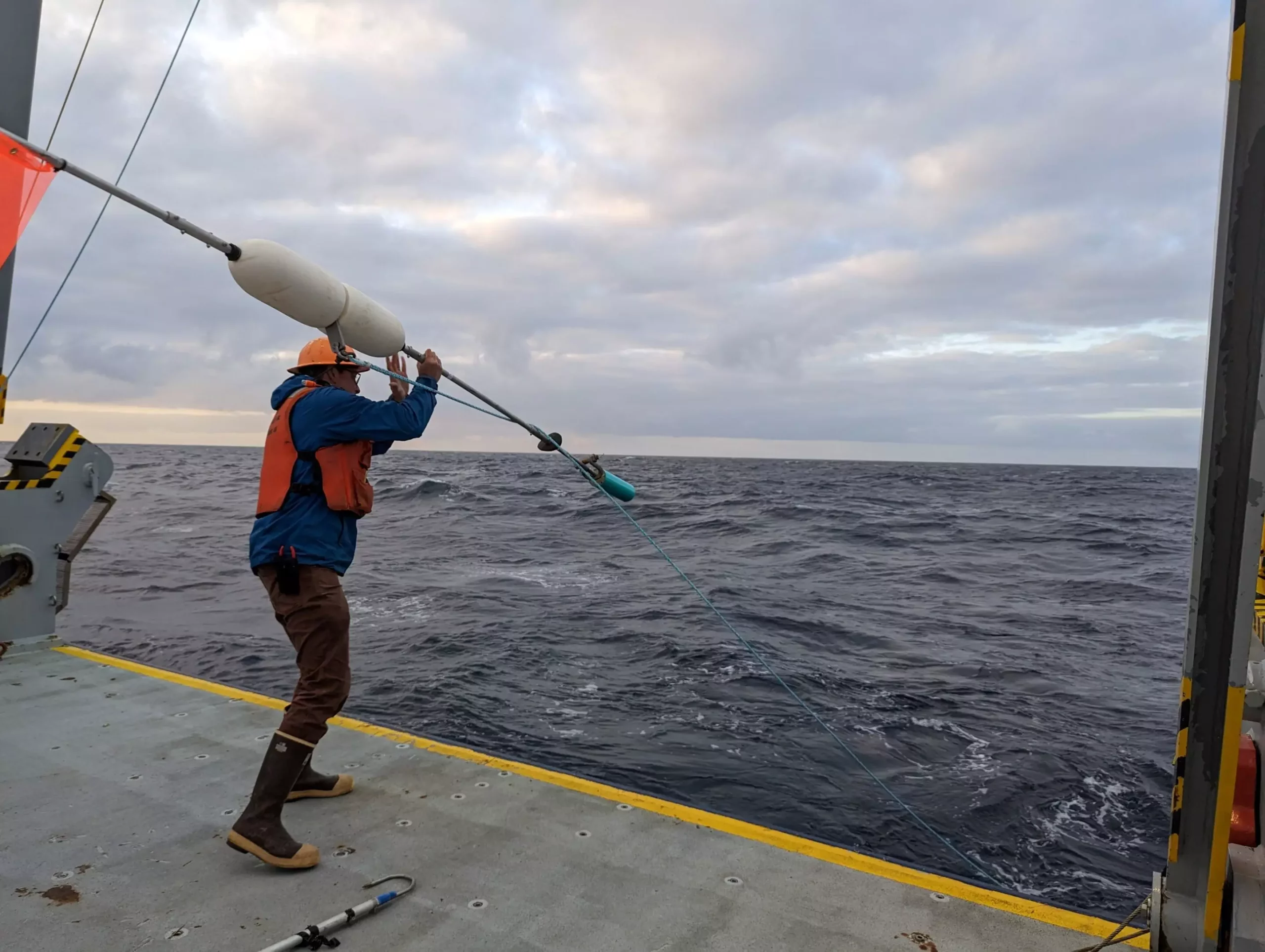The movement of carbon dioxide (CO2) from the surface of the ocean to the deep sea is a vital process for regulating global carbon cycles and climate stability. This transfer, occurring through various microscale processes, is particularly influenced by the role of bacteria that feed on organic compounds, notably lipids. Recent research featured in the journal Science sheds light on how microbial dietary preferences significantly affect this carbon transport mechanism. Understanding these complexities is crucial for enhancing our predictive models regarding global carbon fluxes and climate change implications.
Lipids, or fatty acid biomolecules, constitute a critical component of the particulate organic matter that originates from the ocean’s surface. Researchers found that 5-30% of this organic material consists of carbon-rich lipids, which serve as energy storage and cellular function resources for microbes. As this biomass descends into the depths of the ocean, a diverse array of bacteria degrades the lipids, directly influencing CO2 concentrations in the atmosphere. The biological carbon pump, as this phenomenon is termed, underscores the intricate interplay between microscopic life forms and global carbon dynamics.
The findings from the recent study indicate that bacteria exhibit distinct dietary preferences regarding the lipids they consume. Some bacteria are selective degraders, while others adopt a more promiscuous approach. Benjamin Van Mooy, a senior scientist involved in the research, emphasizes the importance of these preferences as they can drastically affect the efficiency of lipid degradation and, consequently, carbon sequestration in deeper ocean zones. As the research indicates, specific areas may act as more effective carbon sinks due to higher rates of lipid preservation compared to others.
Furthermore, advancements in microbial oceanography now allow scientists to link the molecular composition of sinking organic matter to its degradation rates, shedding light on how these processes can influence regional carbon fluxes. Utilizing a combination of high-end chemical analyses and microscale imaging, researchers are beginning to uncover the complex dynamics governing microbial interactions and their implications for the biological carbon pump.
The mesopelagic zone, extending roughly 200 to 1,000 meters beneath the ocean’s surface, plays a pivotal role in carbon transport. The study’s models indicate that the interactions among varying bacterial communities may significantly influence how lipids are transported within this region. The implications of this finding are profound, suggesting that metabolic specialization and community dynamics can enhance or inhibit the movement of carbon-rich materials deeper into the ocean. The potential identification of hotspots for efficient carbon sequestration within this zone presents opportunities to target conservation efforts and improve natural carbon capture.
One of the remarkable aspects of this research is its interdisciplinary approach, combining technological innovations that have not previously been utilized together. Roman Stocker, a co-author of the study, highlights the potential for future explorations at the intersection of microbial oceanography and advanced analytical technologies. This collaboration can deepen our understanding of the micro-level processes in the ocean and their broader ecological significance. As more sophisticated techniques become available, it becomes crucial for researchers to adopt a multi-faceted perspective on microbial interactions and their ecological effects.
The research also signals a shift in how scientists perceive bacterial consumption in natural environments. Conventional wisdom presumed that bacteria indiscriminately utilized available lipids; however, this study indicates that they resemble human food preferences, being selective and competitive regarding their dietary choices. Understanding these dietary behaviors may change how we approach ecological research, emphasizing the importance of community dynamics in microbial functions rather than isolating species in artificial settings.
Moreover, the research emphasizes that a collaborative approach among bacteria in degrading lipids can enhance efficiency relative to isolated species. This understanding aligns with the overarching theme of interconnectedness within ecosystems, suggesting potential avenues for enhancing carbon breakdown processes by harnessing beneficial microbial combinations.
As scientists continue to piece together the complex puzzle of carbon cycling in the oceans, understanding the specific roles and preferences of microbial communities becomes increasingly vital. The research underscored the multifaceted influence of bacteria in degrading lipids and transporting carbon to deeper ocean layers. Exploring these dynamics will be essential in forecasting future carbon fluxes and developing strategies to mitigate climate change. By prioritizing continued investigation into these intricate biological processes, researchers can illuminate pathways toward reducing atmospheric CO2 concentrations and combating climate impacts on a global scale.


Leave a Reply